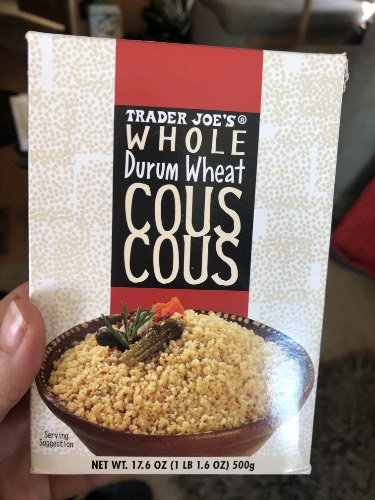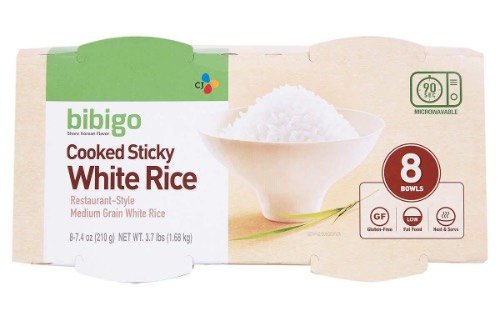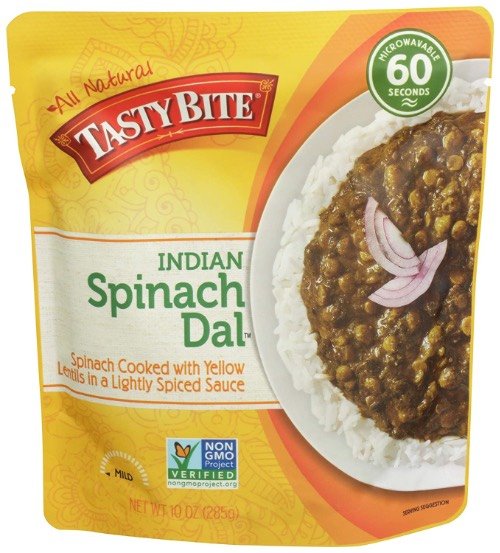If you have a small kitchen, you might think that meal prepping isn’t for you. But there are ways you can make the best use of your space to save you time and money. Whether you live in an apartment, RV, dorm room, or just want to make better use of your space, you’ll find some ideas here.
I’ve always been a fan of batch cooking but never fully embraced meal prep. I already enjoy having leftovers sometimes (Yay! No cooking!) but could never consider planning out my week’s food and cooking it all in advance. I just don’t have the space to store it.
To be honest, I hadn’t even really heard of meal prepping before we went full-time in our RV. And meal prepping in the RV is a bit of a challenge. If you’re stationary it’s a bit easier but when you’re on the move getting it all organized is tough. But when you’re on the move is when you need it the most!
But in order to reduce stress, I’m ready to embrace some prep work. Meal prepping starts with meal planning. So let’s take a look at the planning challenges in a small kitchen.
Challenges to Meal Planning for a Small Kitchen
Even if you have a tiny apartment, your kitchen is probably not as small as mine. And even so, I’ve got a decent-sized kitchen for an RV. It’s no 5th wheel kitchen with a big island and tons of storage, though.
In my kitchen, I have a standard RV fridge. It’s a Norcold N842IM to be specific. This unit has 7.5 cubic feet of storage space. That’s the refrigerator and the freezer. And I’m sure the ice maker is in that space. For comparison, the standard top freezer type unit that I had in most rentals has about 20 cubic feet of space. Boy does that sound luxurious to me right now!
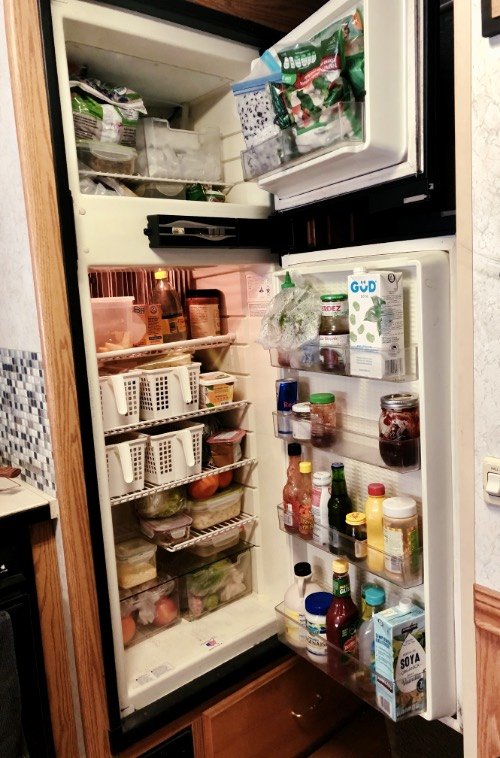
This small amount of space for perishables means that I have to be really conservative about what goes in there. It means I often can’t buy economy-sized items. And those giant boxes of greens are right out.
Space in the freezer is limited, too. And a big chunk of space in there is taken up by the blueberries we have in our oats every morning. I buy 3-4 pound bags when I can find them at a good price.
The RV has a decent amount of space for dry goods and cans. But nothing close to what you have in a house or apartment.
Appliance space is also at a premium. We probably have more than most RVers and I have to shuffle it around quite a bit.
Because of these constraints, my meal planning makes optimal use of the space that I do have. And if I’m doing a shop for a full 7 days, I will probably still need to leave some produce out on the counter for a day or two.
Produce I never put in the fridge
- Red onions
- Tomatoes
- Winter squash (butternut, acorn, spaghetti squash, etc.)
- Bananas
Produce that can be on the counter a day or two
- Bunched greens like kale, collards, or chard (put them in a glass of water like flowers)
- Apples, oranges, and pears (I prefer mine refrigerated but they can stay at room temperature)
- Broccoli and cauliflower
- Regular and sweet potatoes (these can be stored outside the fridge if you have a good cool, dry place for them)
- Bell peppers
- Carrots
Look at it this way; if it’s not refrigerated at the market, it’ll probably be okay for a day or so at room temperature at home.
When you’re considering what to make for the week, think about the space that you have. For instance, I wouldn’t plan 4 different dishes that require voluminous greens because I don’t have space for them. I pick meals that use a variety of vegetables, some for the counter, some for the refrigerator, and some that are frozen. Balancing between those is key.
Space-saving Ingredients
We love products that help us save space but are also healthy or not particularly unhealthy. Usually there will be a trade off. You’ll pay a little more for convenience. Sometimes a lot more. But the comprise might be worth it for you.
But here’s the great thing about meal planning; if you only buy what you need, you’ll have more room!
Here are some of my favorite ingredients for saving space.
Whole-wheat couscous
It’s hard to beat whole wheat couscous for a nearly instant grain that is still good for you and isn’t too pricy. It’s a small box that makes 11 servings. It’s really about the perfect product for small kitchen dwellers.
You can use this couscous as you would rice. Top it with your favorite stews and chilis. Add some to a salad to make it more substantial. Use it as the base for a bowl. It works particularly well in a Mediterranean-style bowl topped with tomato, cucumber, chickpeas, lettuce, red bell pepper, and a vinaigrette.
You can find this at Trader Joe’s. There are multiple brands available on Amazon but we don't see it in stores very often. If you’ve seen it elsewhere, please drop a comment below to help other people find it!
Microwavable Rice
Pre-cooked rice comes in a few different forms. You’ll get the best price if you get it at Costco or possibly an international market and white rice is the most affordable. Brown rice is about double the price.
These white rice bowls come to about $1 each at Costco. You can also find similar products at a grocery store. We don’t get these because it’s too much packaging and takes up a lot of space. But they are super convenient if you need to take your meals to work.
These microwavable packets are great for quick meals you’re going to have at home.

If you have the freezer space, check out the frozen options in your supermarket. Kroger has these Simple Truth brown rice packets. They also have white rice if that’s your preference.
Cauliflower Rice
Sure, it’s easy to buy a head of cauliflower and rice it in a food processor but not everyone has the time or equipment to do that. And then you need to store it in the refrigerator or freezer.
These cauliflower rice packets are microwavable and you can sometimes find them at Costco. We see them on the grocery store shelves too. If you’re looking to reduce calories, cut your rice with some cauliflower rice or just replace it with cauliflower rice.
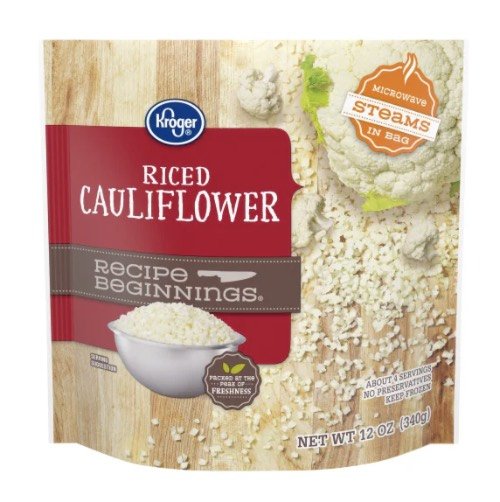
Again, if you have the freezer space, there are affordable frozen options for riced cauliflower. This one at Kroger is $2.29 for 12 ounces as of this writing.
Canned Beans
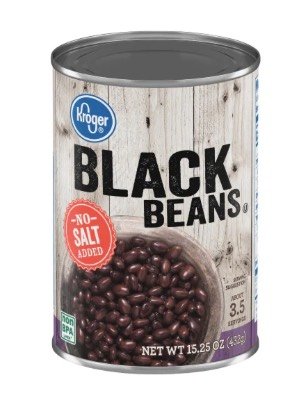
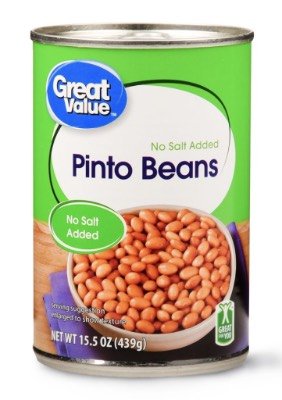
Canned beans are a lifesaver for quick, healthy meals. They are an inexpensive protein source that will fill you up. Most grocery stores carry a wide variety. My preference is for beans with no added salt. Both Kroger and Walmart will reliably have a few options. The Kroger brand is $0.79/can and Walmart is $0.54/can.
In Mexico, and apparently on Amazon, you can get beans, regular and refried, in microwavable packets. If you can find these they might be a more convenient option for you. I like the fact that they cook right in their packaging.
Packet Meals
More packets! To be honest, I don’t use these very often because they are usually full of sodium and oil. But they’re still going to be better than fast food. And they’re shelf-stable so it’ll hang out until you need it. These types of meals can be hit or miss. This dal and the chana masala are pretty good though.
There are many, many more options out there. Next time you go to the grocery store, try giving yourself some extra time to browse the aisles and look for convenience products that fit your dietary and budget needs. You might be surprised at what’s available!
Meal Prepping in a Small Kitchen

Many of the tips that can help people plan and prep meals for a small kitchen are also great time savers. Space is limited here in the RV so I’m all about using minimal dishes. One-pot meals and the Instant Pot are my best friends. And I have no fear of the microwave.
Planning for a smaller refrigerator and freezer
The biggest limitation for me is the lack of refrigerator and freezer space. The key to dealing with this is to limit what you prep ahead of time to space you have available. For example, you might prep a grain and a bean for the week and then use them as needed.
If you’ve planned what you’ll be cooking, you can also prep many of the veggies for your meals. Washing, chopping, and bagging your produce can make it easier to fit. Wash, dry, chop, and pop your kale into a reusable storage bag and it will take up much less space. Even if you use pre-washed boxed salad greens, bagging them will take up less space than the box. And it shrinks as you use it, unlike a box.

If you are using hard-sided containers, another trick is to downsize the containers as you use up the food in them. This will free up space for another dish you can prep. Or you can slide something else in the refrigerator.
Speaking of containers, pick containers that work best in your fridge. Measure your refrigerator so you know exactly what you need when you go container shopping.
Choose your appliances wisely
No, you don’t need every new appliance that comes along. Think about what you like to eat and get what you need to make those.
We eat a lot of rice and beans. The Instant Pot excels at both of those. Do you need a full-size blender or will something like a smoothie-size blender make everything you need? A food processor might not be necessary unless you want to make your own hummus and veggie burgers.
Make your space do double duty
There’s one thing that RV manufacturers got right and might help some of you with a small kitchen. Most RVs have a cover that goes over the stovetop so you can use it as prep space. You can see that in the photo from our RV kitchen above. Another RV trick - a fold-down counter extension. The dish drainer sits on ours.
Make creative use of the space you have
You can also use your dining table for extra prep space. And Ikea has tons of rolling cart options that can serve as a prep surface or get your microwave off of your counter to make more room there.
If you want to get creative with your small space, there are a few helpful resources online. One of my favorite resources is Apartment Therapy. Pinterest was made for this kind of research. Start with “tiny kitchens” and then fall down the rabbit hole.
Are you meal prepping in a small kitchen? What steps have you taken to overcome the lack of space? What are your biggest challenges?

